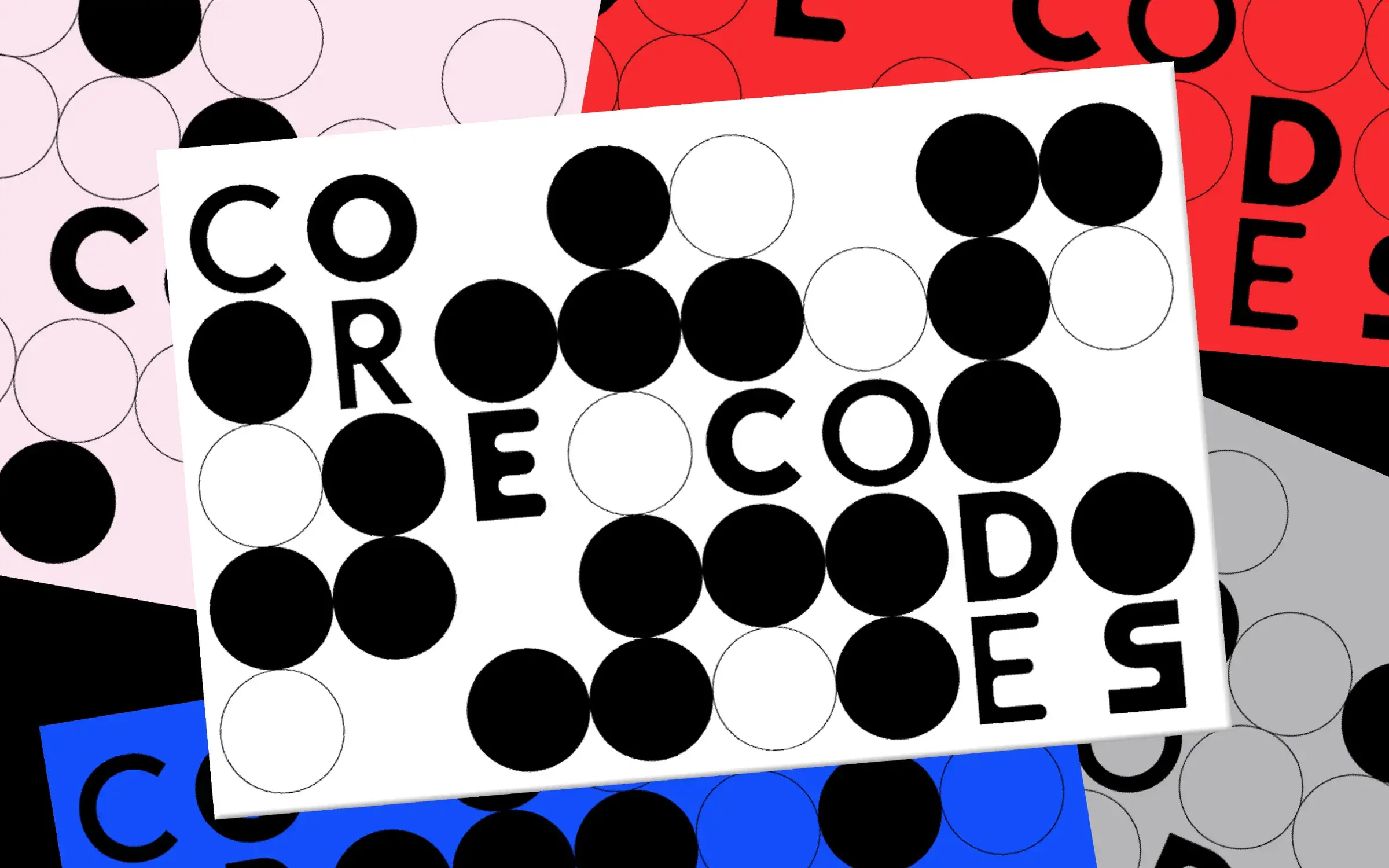Corecodes
A presentation of texts, patterns, and woven drawing samples on gender, optimization, and microaesthetics from LeFevre Fellow Samiha Meem

1st Floor Ramp, outside the Banvard Gallery
The “girl” often operates as a cipher for capitalist productivity within critical theory to examine the entanglement of labor, identity, and capital. From Tiqqun’s “Young-Girl” to Andrea Long Chu’s Females, the girl is provocated not as a biological category but as a universal existential condition that emerges as individuals in modern societies, when denied the ability to generate their own subjectivities, become depersonalized commodities: a performance-driven model citizen of total social integration. The argument is that, as identity, actions, and desires are increasingly outsourced to external forces whether through coercion, convenience, or illusion—mass-media algorithms, self-surveillance metrics, insurance policy measures—everyone has, in some form, undergone girlification.
The girl framework resounds sharply in the neoliberal scheme of “always optimizing,” where, whether in software, hardware, or social programming, there is always a deficit, and the promise of transformation never materializes into anything but continued labor. We see this in the endless collection of aesthetic “cores,” more broadly sorted as “microaesthetics.” Microaesthetics are an unstable network of consumer behavioral trends—aesthetics made micro as a product of accelerated market cycles—that script a compulsive recalibration of identity through rapidly shifting granular narrative frameworks, product punch lists, and visual directives dictating arrangements of and across body, space, and image. This logic of categorization and imitative construction sits within a broader literary tradition in architecture—treatises, manuals, and consumer catalogues of social, aesthetic, and economic cohesion—for curating, constructing, and managing qualified and quantified encounters with the material world: prescribing not only how to live or live better but how to perform living better.
The proliferation of microaesthetics across image discovery platforms that promote stylized repetition at unprecedented scales of efficiency does not function much differently from an architectural drawing on a job site or work instruction software on the production floor: they are instructions—each artifact bearing both visible and invisible significance, coordinating relationships of direct and ambiguous intentions—that streamline the labor of innumerable bodies in operational settings. As computer vision, shaped by algorithmic biases, market-driven imperatives, and sociopolitical agendas, continues to curate, construct, and manage these instructions into their most anodyne forms, the girlified subject recedes further into disembodied abstraction. And, if everyone is a girl, then the “girlroom,” as a rhetorical space constructed by these instructions, acts as the universal operational setting of contemporary capitalism—disembodied, always optimizing, and indefinitely extensible. By figuring the girlroom, we can examine the entanglement of labor, identity, and capital within spatial production and performance.
corecodes uses microaesthetic images and their implicit instructions to compose a series of girlrooms shaped by distinct visual economies across domains of play, work, home, and pleasure: Sportpop Acceleration, Siren Economy, Tradwife Desolation, and Babygirl Degrowth. The cores arrange a set of codes: the index orders relations within semantic descriptions extracted from Pinterest image repositories using a deep learning-based vision-language model; the text expands its interpretive frames using narrative and natural language processing; the pattern dissolves legibility through a “name drafting” system that inscribes the index into adaptive weaving drafts; and the loom acts as a mutable site of translation where abstraction binds to labor in the construction of woven drawings. These drawings represent a series of cuts: not only through spatial conditions, but through spatial conditionings. As each cut stacks, the girl, the girlroom, and their affective, economic, and algorithmic relations are figured in the parallels, misalignments, and overlaps of instructions. Yet, the representational frameworks that enable further optimization—body, space, and image—are no longer stable.
About the Team
Samiha Meem
2023-25 Howard E. LeFevre Fellow
Samiha Meem is a designer and writer. Her research explores how image, media infrastructures, and popular culture meet the representation, consumption, and production of architecture. She is the 2023-25 Howard E. LeFevre Fellow at the Knowlton School at The Ohio State University.